Locations: Berlin, Borna, Herchen, Germany
“Visionary Sightseeing Binoculars” is an interactive public art project that aimed to stimulate diverse public awareness and discussion on the past and possible future uses of the architectural form of the Thingstätte. The Thingstätten are architectural forms that have been denounced by the German public and left to decay for 60 years, many situated in forests. They were used by the National Socialist Party in Germany in the 1930s to conduct youth plays, political rallies, and propaganda. Because of their contentious history, images of the sites have been destroyed; even the word Thingstätte itself was banned and the sites are not spoken about. The Thingstätten are underresearched and my work is part of a larger project in which a group of contemporary Jewish-American and German-American artists engage with the Thingstätten in their work. This larger group exhibition and catalogue is curated and written by Katharina Bosse.
“ Visionary Sightseeing Binoculars” consisted of the following elements:
– A metal viewing device (already built) installed in a public square for several days in Borna, at the base of the Thingstätte in Herchen, and at Tempelhof Flughafen in Berlin. It contained one past and one present photograph of the town’s old Thingstätte in stereoscopic 3D (created in Photoshop) and one past and present image of the Thingstätte of another town.
– The artist and assistant were present at the site next to the piece introducing the project to visitors.
– A survey was conducted via a QR code app to ask what people had in mind for the future of the Thingstätte.
Even though many towns have a Thingstätte, they are often hidden in the outskirts and overgrown in forests. Many residents are unaware of their existence, or unaware of their history. In Herchen in particular, residents thought it was an old castle, and many had never visited it.

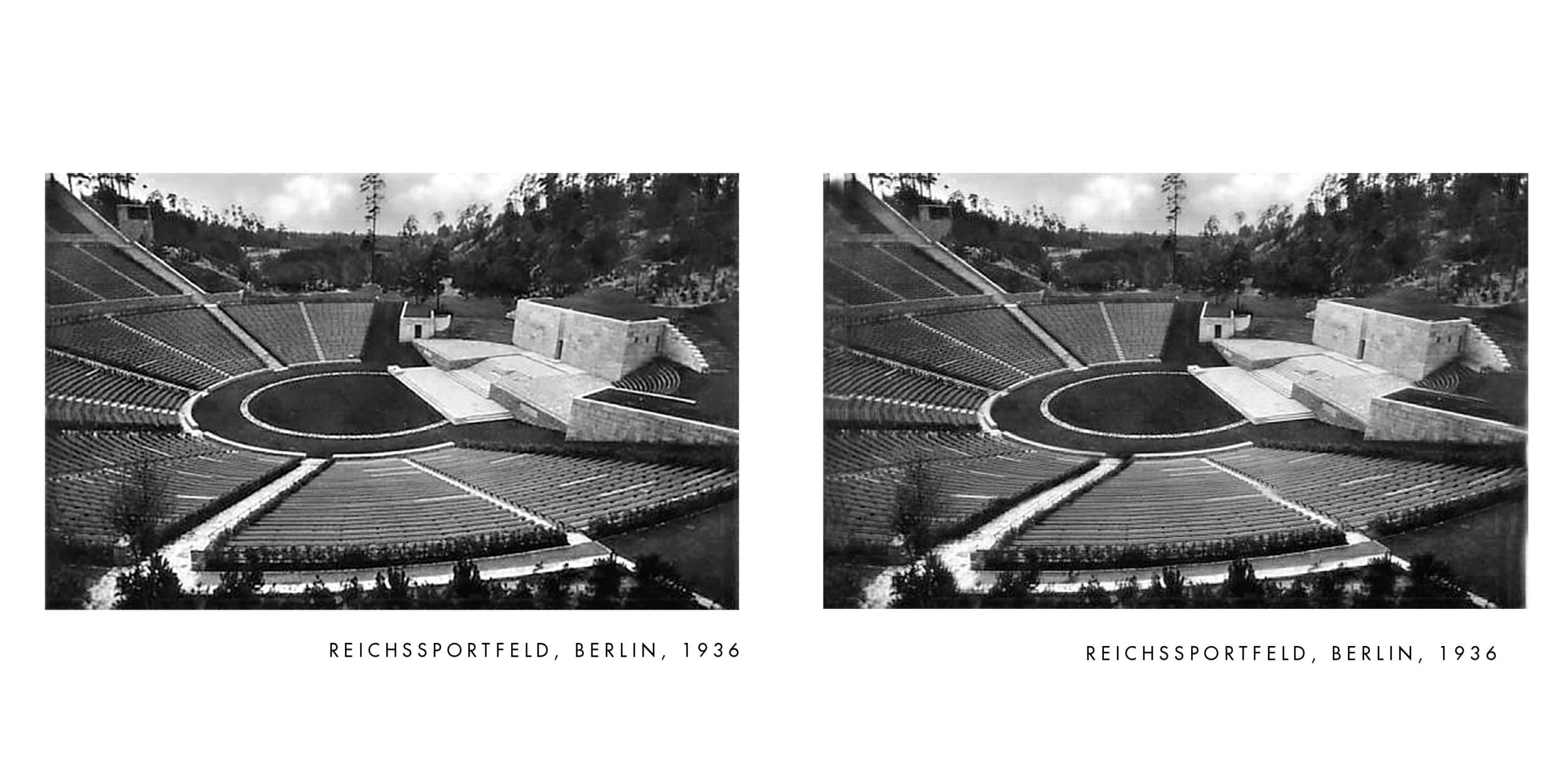
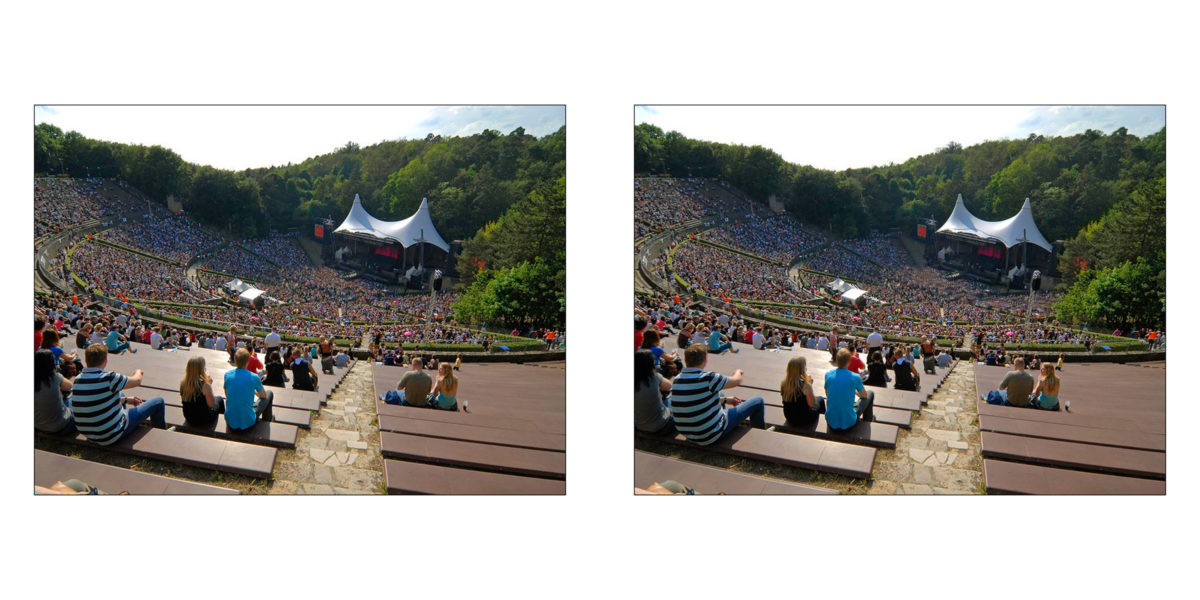
Reactions Report
In Berlin, the binoculars were installed at the public park in 2015 which used to be Tempelhof Flughafen, now closed. It is a location that Berliners use to cycle on the old runways, walk, fly kites and enjoy the open air, public art and the occasional derelict airplane of which there are a few. The Tempelhof Flughafen has housed many contemporary art festivals that take place outdoors, and the audience, although mixed, is most likely to be used to seeing public art. The reaction of people in Berlin to seeing the images in the binocular stereoscope was one of curiosity and of openness.
Many visitors did not know that the Berlin Waldbühne had been built by the Nazis. Some however did know this, and also knew of other Thingstätte sites in Germany in the countryside. Yet most project visitors / passersby objected to being recorded via audio or video or to having their face depicted. This may be due to the ad hoc nature of this project, that was staged in a public place for passersby to see, or it may have to do with an increased sense of privacy felt in Germany in general, as compared to American audiences I have encountered through this project in the past.
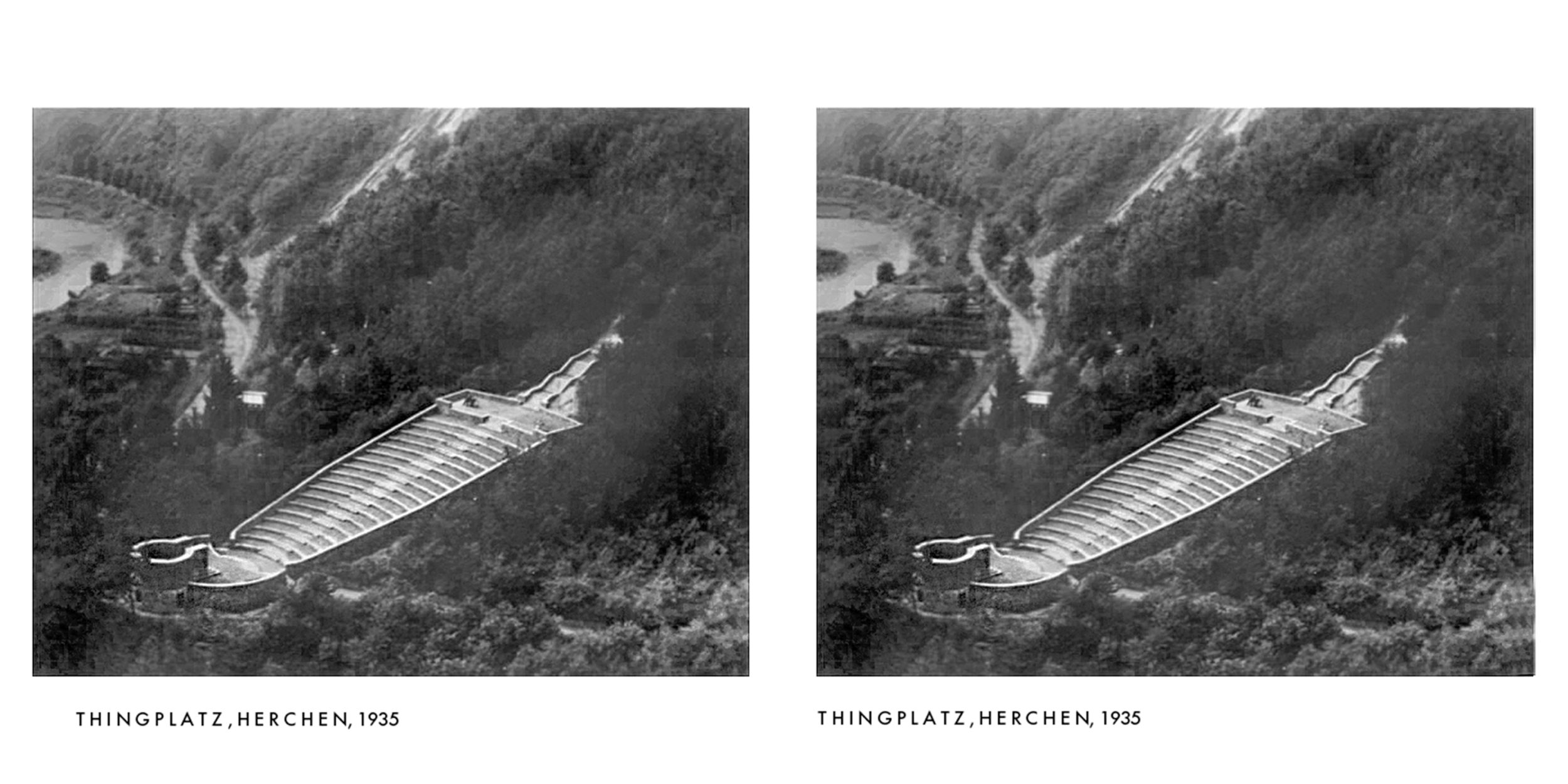
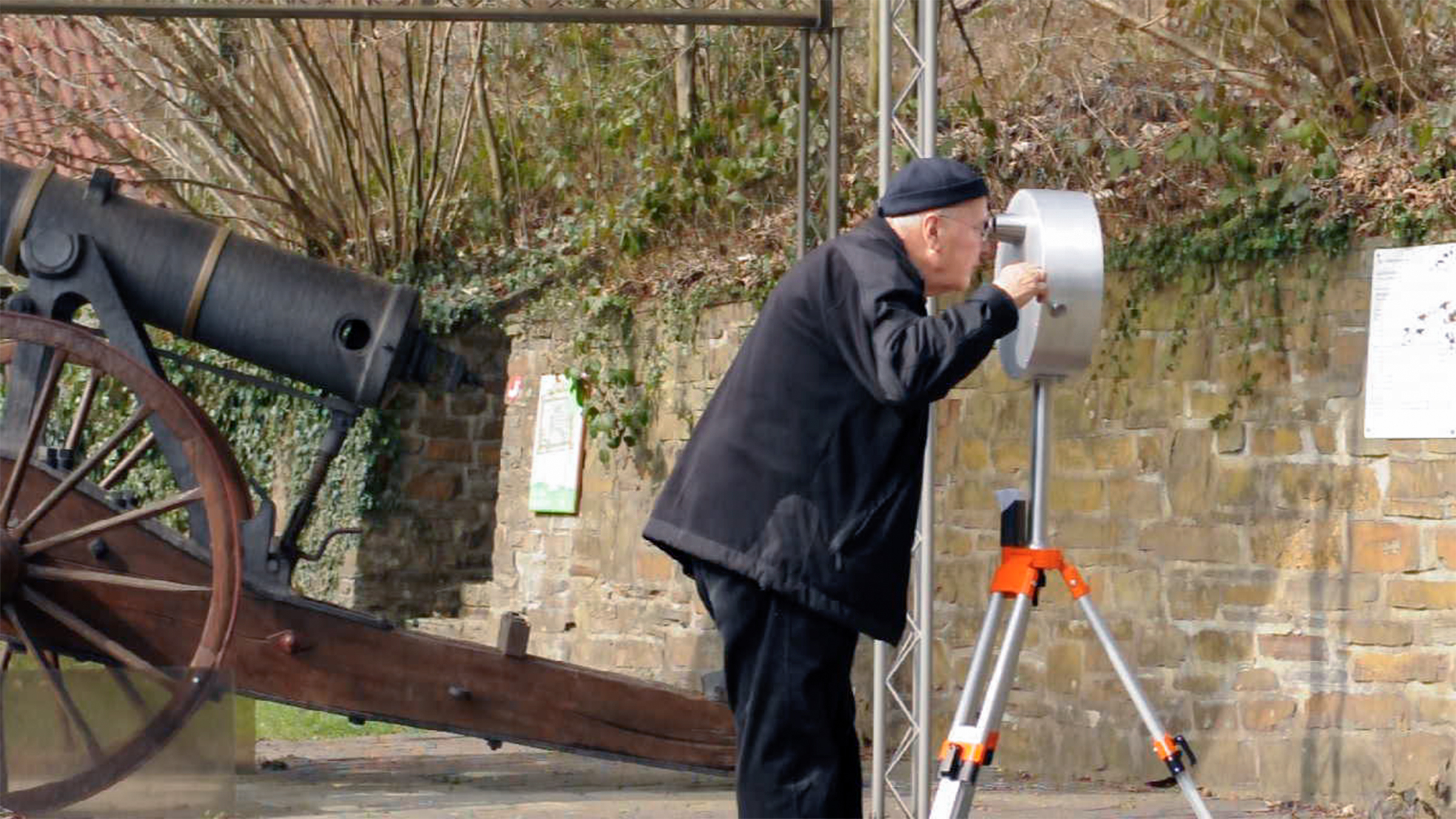
In Herchen an der Sieg, 16 people visited the binoculars within 3 hours, which were stationed at the foot of the hill where the Thingplatz is still today. People were open and curious, and wondered what the object was—it does not look like traditional art and, as intended, leads people to ask questions and wonder what it is, and what it is for. None of the participants knew that the architectural structure on the hill was a Thingplatz. Some thought it was a castle and they had not visited it. The local historian Franz Kluwe noted that many young people were not interested in it despite the town’s efforts and despite recent artistic projects having taken place the previous summer at the site.
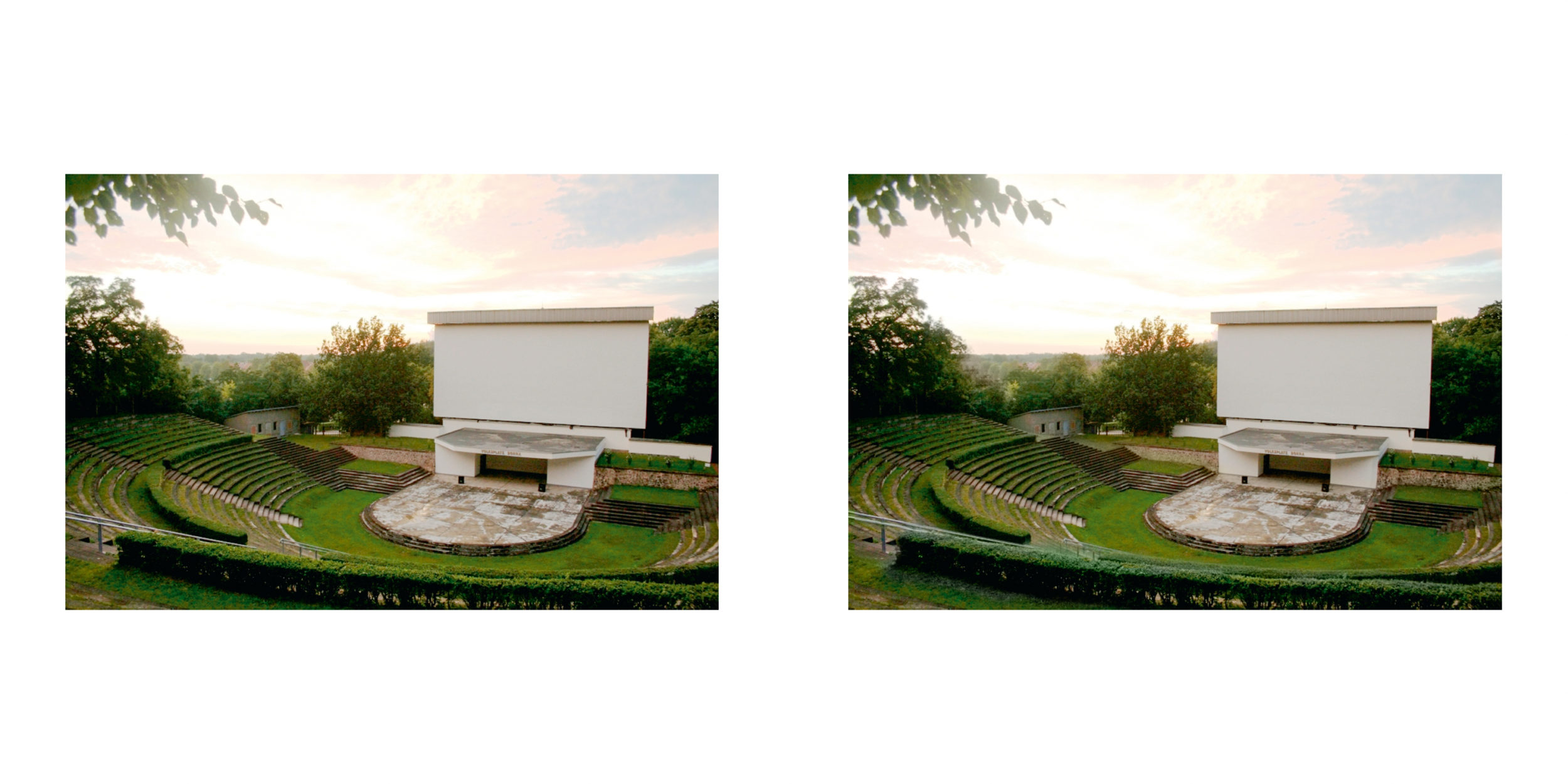
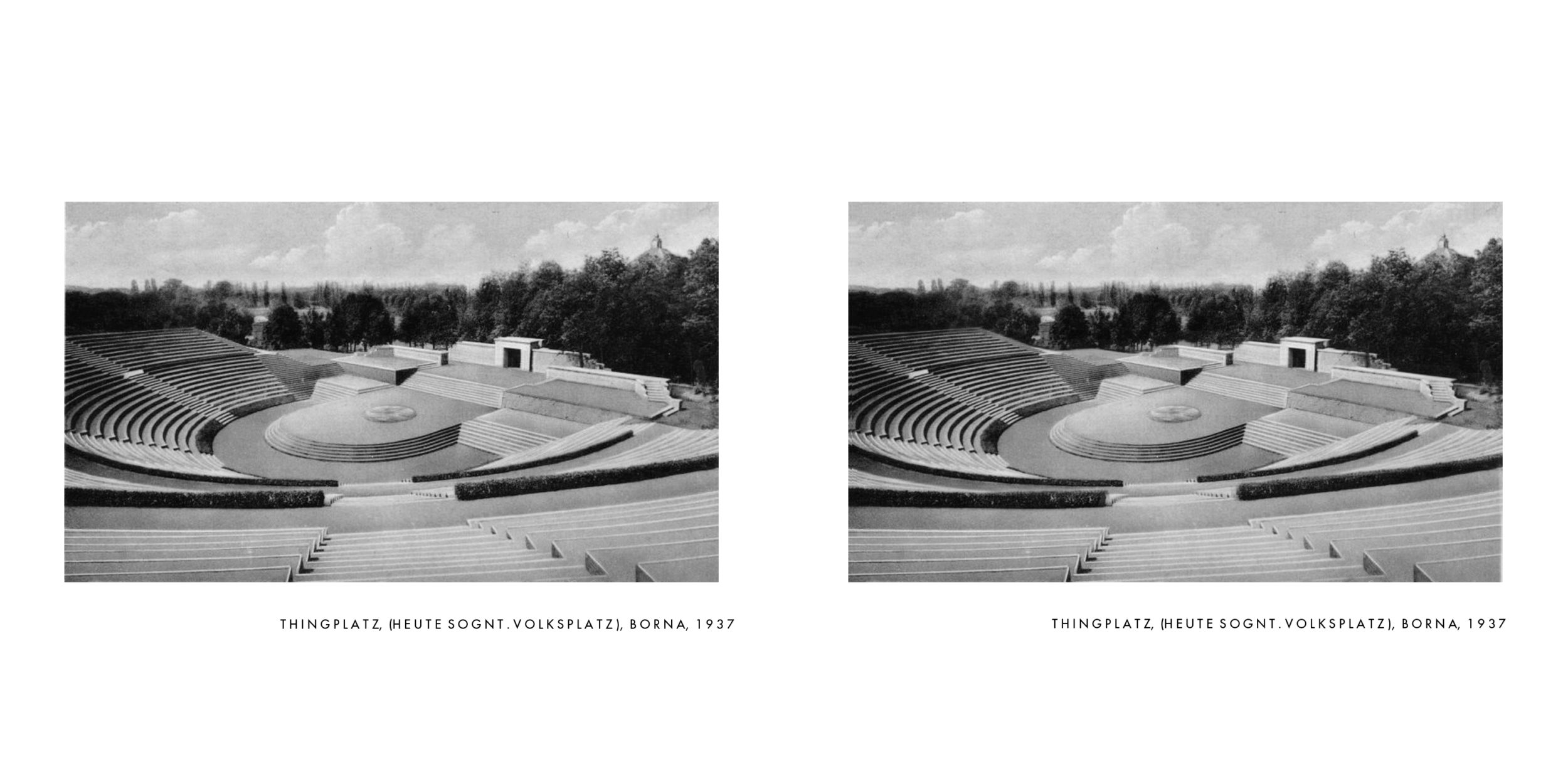
In Borna, myself and my assistant generally felt unwelcome. Art, here, may not have been the best way to engage the public’s attention, despite being stationed in the marketplace. People did not engage with it and looked at us in a strange way. The weather was also uncooperative. Borna is a town to which I would like to return to spend more time. It lay in stark contrast to Berlin, in the nature of people’s reactions in Herchen. Since the project is not overtly recognizable as art, interaction may have been doubly hard for Borna residents who may not have been exposed to as much public art as Berliners have been in Tempelhof.
Rebecca Hackemann
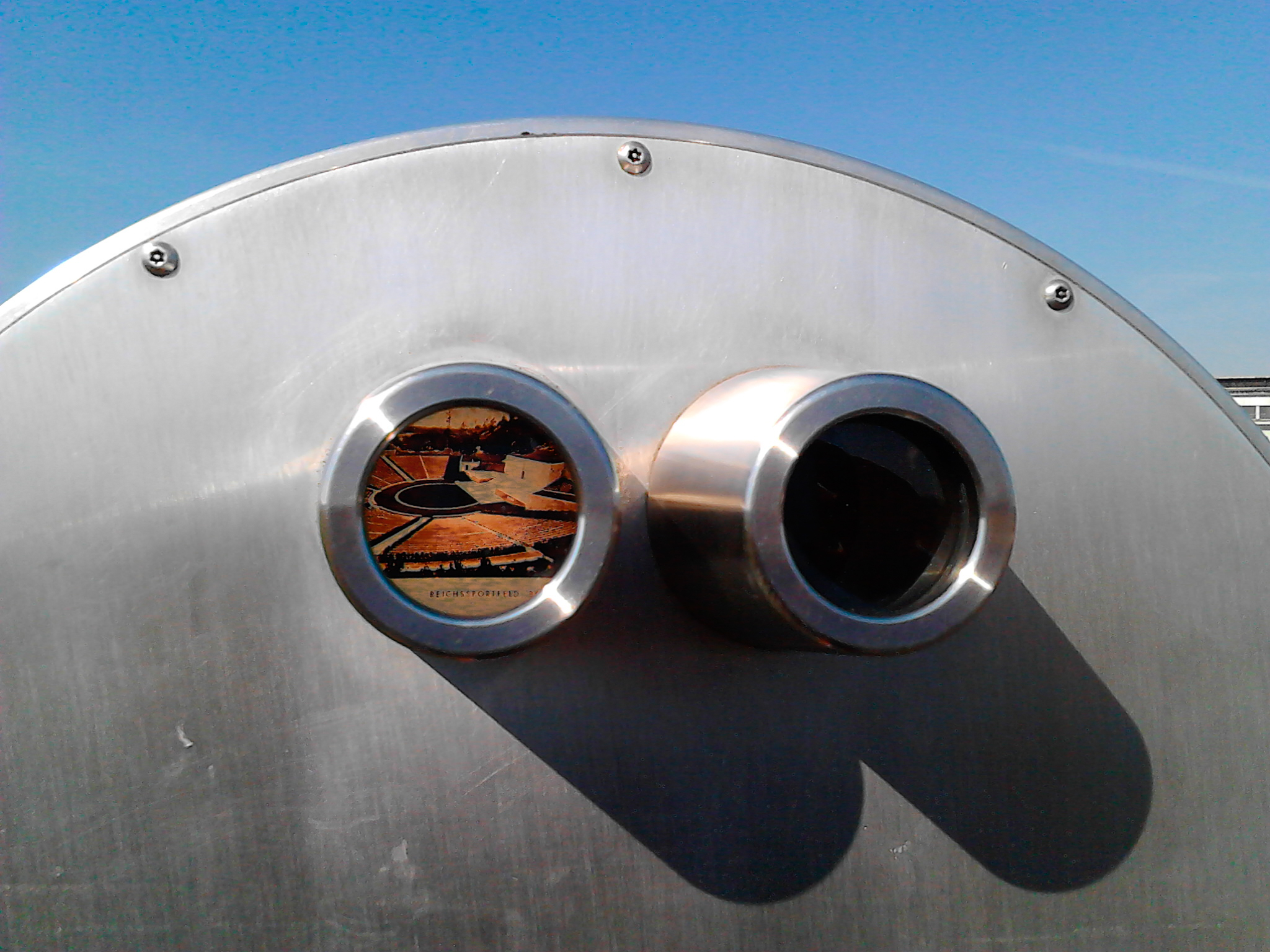
The project entitled “Visionary Sightseeing Binoculars”
is a photographic and socially engaged travelling public
art project. It took place in Berlin, Borna and Herrchen
in March 2015 for 8 days.
Artist: Rebecca Hackemann Website
Fabrication design: John Stemler,
Northpenn Machine Works
Assistant: Nassim Rad